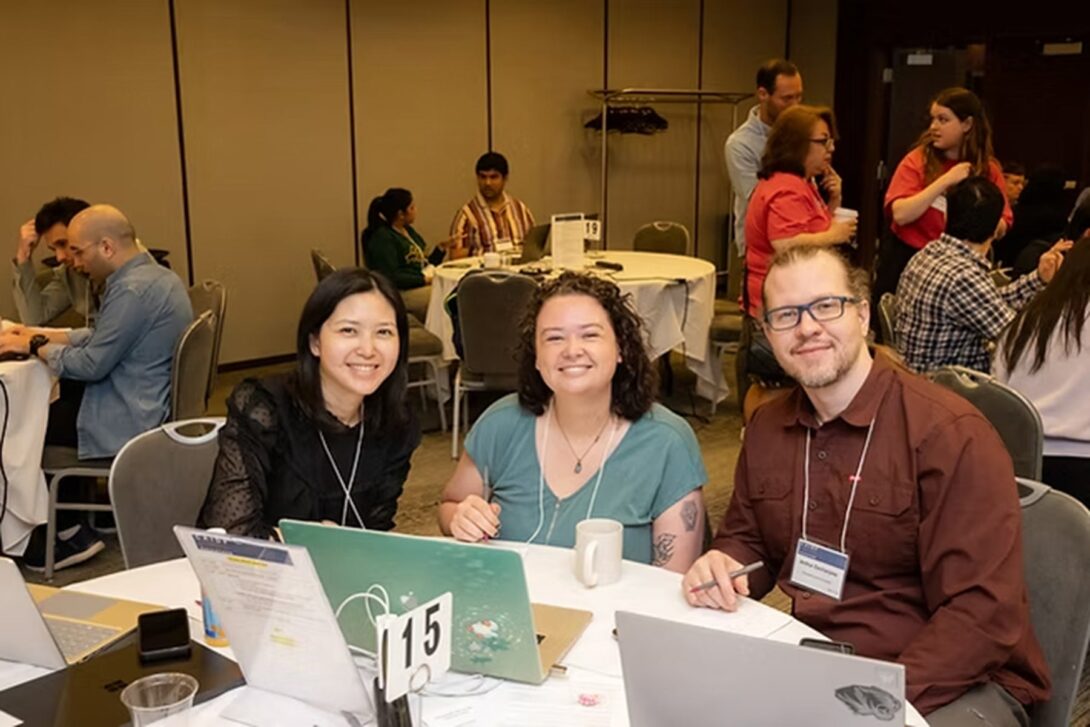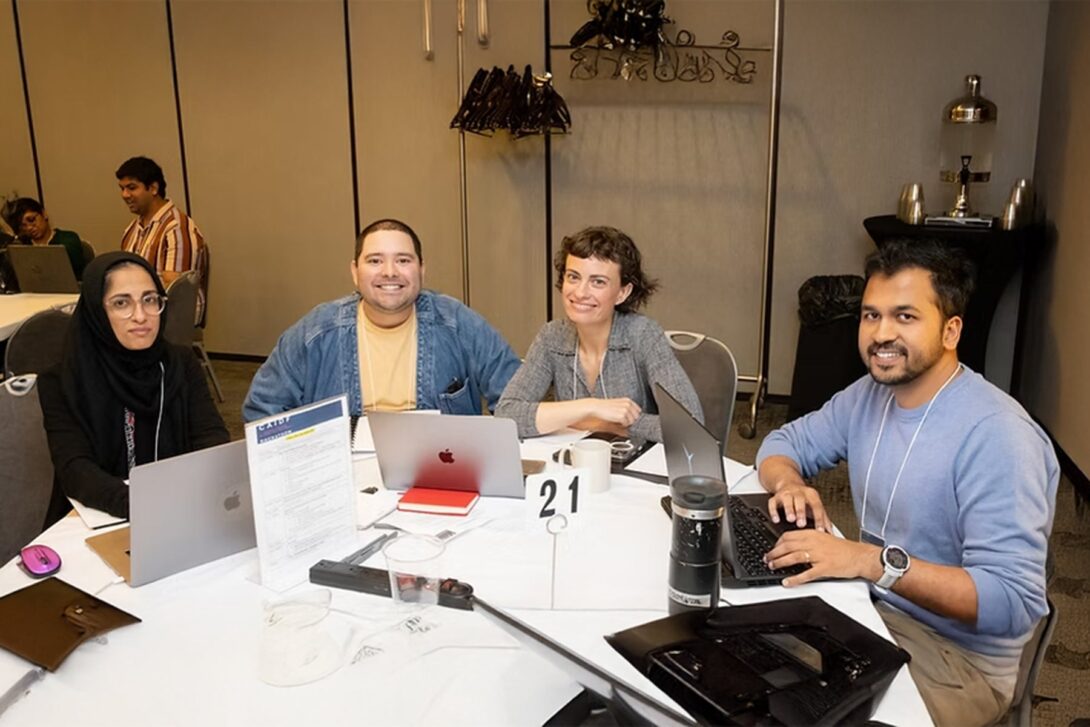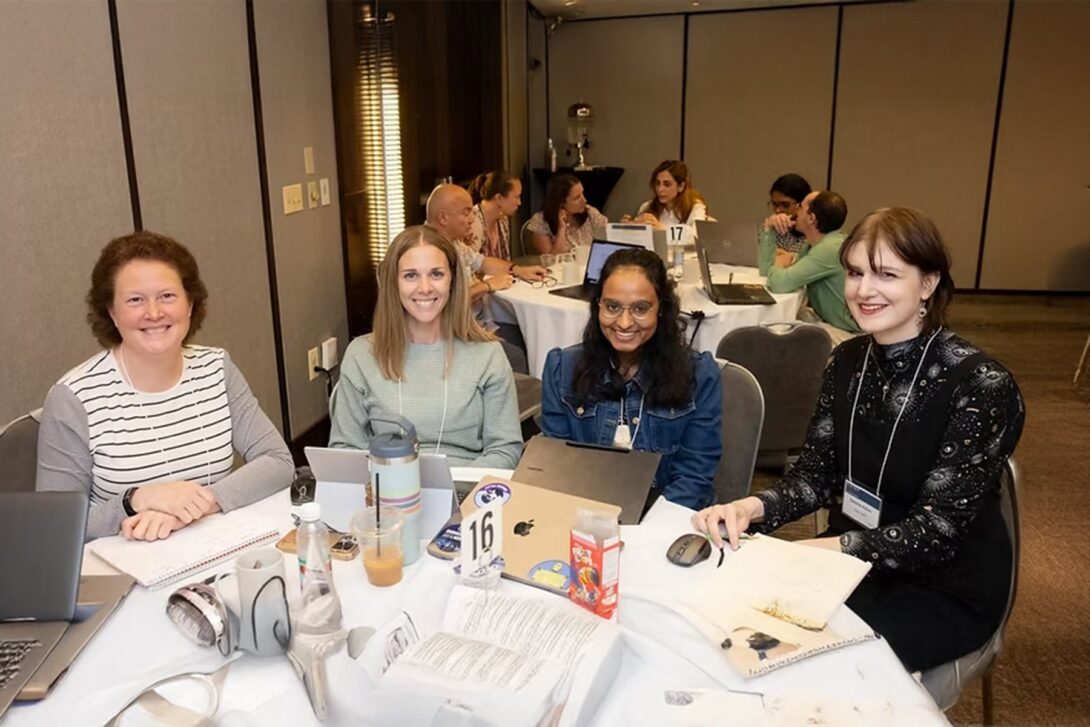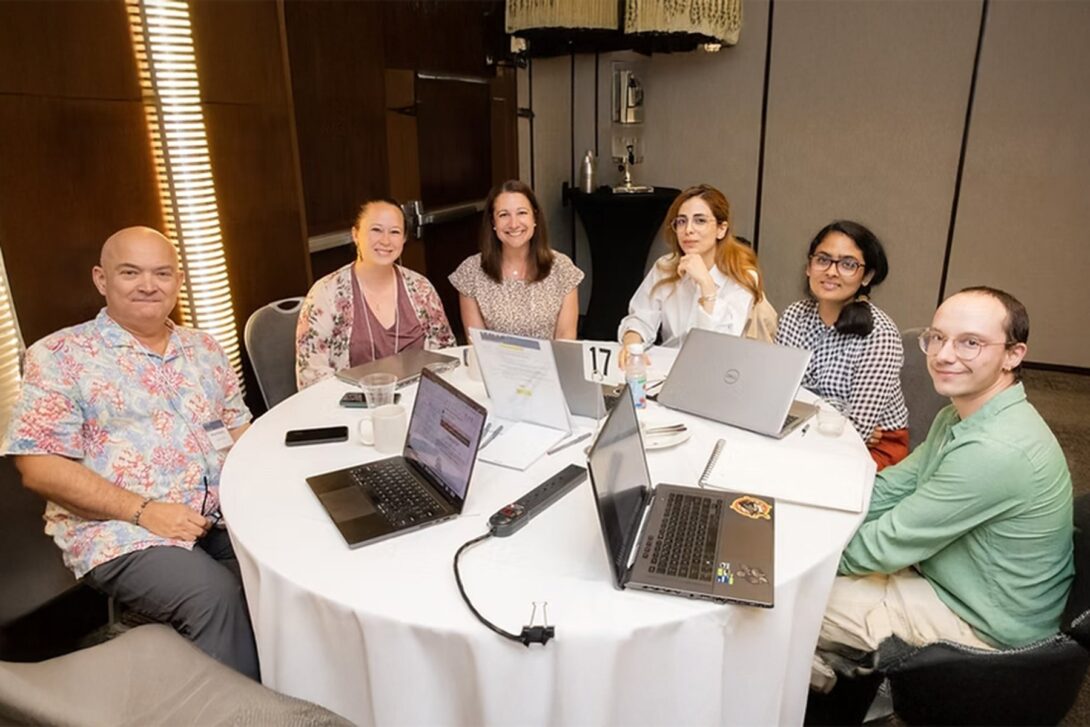Hackathon participants use AI to uncover hidden health data and innovate patient care
Body

Over the last weekend in May, web developers, designers, computer scientists, informaticians and health care professionals joined forces for a hackathon hosted by Creating AI-Enabled All-Health Team Data Fabric (CAIDF).
Funded by UIC’s first grant from the federal Advanced Research Projects Agency for Health, CAIDF uses artificial intelligence to unlock hidden health data to develop patient records, improve care and enable scientific discoveries. Investigators on the CAIDF team include BHIS professor Andrew Boyd (co-principal investigator and hackathon event organizer), PT professor Tanvi Bhatt, PT and BVIS clinical assistant professor Sam Bond and OT and RS professor Mary Khetani.
Body II

The CAIDF hackathon gathered a multidisciplinary group of 97 students and professionals on May 30 and 31 at the Crowne Plaza Chicago West Loop. Participants were split into 20 teams that competed to come up with innovative proposals for patient care from the data provided: 100,000 anonymized health records — input by nurses, physicians, occupational therapists, physical therapists and speech language pathologists — from neonatal intensive care patients or from patients injured by falling.
AHS students, alumni and faculty were part of several teams that excelled in the competition. Sam Kobel, a second-year BVIS student, was a member of the first place winning team. She presented to the judges an algorithm that scanned patient histories for key terms that indicate fall risk. An aspiring animator, Kobel said the hackathon opened her eyes to new connections between creative visualization and patient care.
“I wouldn’t have known about this opportunity had I not been a UIC student,” she said.
Body III

BHIS assistant professor Mohan Zalake and Saraina Adam ’18 MS BVIS were members of the teams that tied for second place. Zalake’s team used NICU data to algorithmically predict necrotizing enterocolitis, an intestinal perforation that’s dangerous to premature infants.
“Our different backgrounds and skills helped us identify attractive, novel solutions that wouldn’t have been possible in a lab,” he said.
Keaton Mullins ’22 MS BVIS, a member of a team that tied for third, joined the hackathon to gain a new perspective on his career in medical illustration. His team’s project used the American Hospital Association’s 4M model to condense and present patient data from multiple providers.
“With my background in visual design, I was excited to learn more about the use of (large language models) and how to adapt that data into a cohesive visual solution,” Mullins said. “The ideas for health integration that resulted from (the hackathon) hold incredible potential.”
Body IV

All 20 teams offered inventive, data-driven ideas to improve patient outcomes, said Boyd.
“The hackathon’s impact is the lasting paradigm change of the individuals who attended and the future research trajectories,” Boyd said. “We have shown the value of hidden data, and now researchers around the world can explore the potential impacts.”
This story has been edited for length and clarity by Emily Parenti-Lopez.